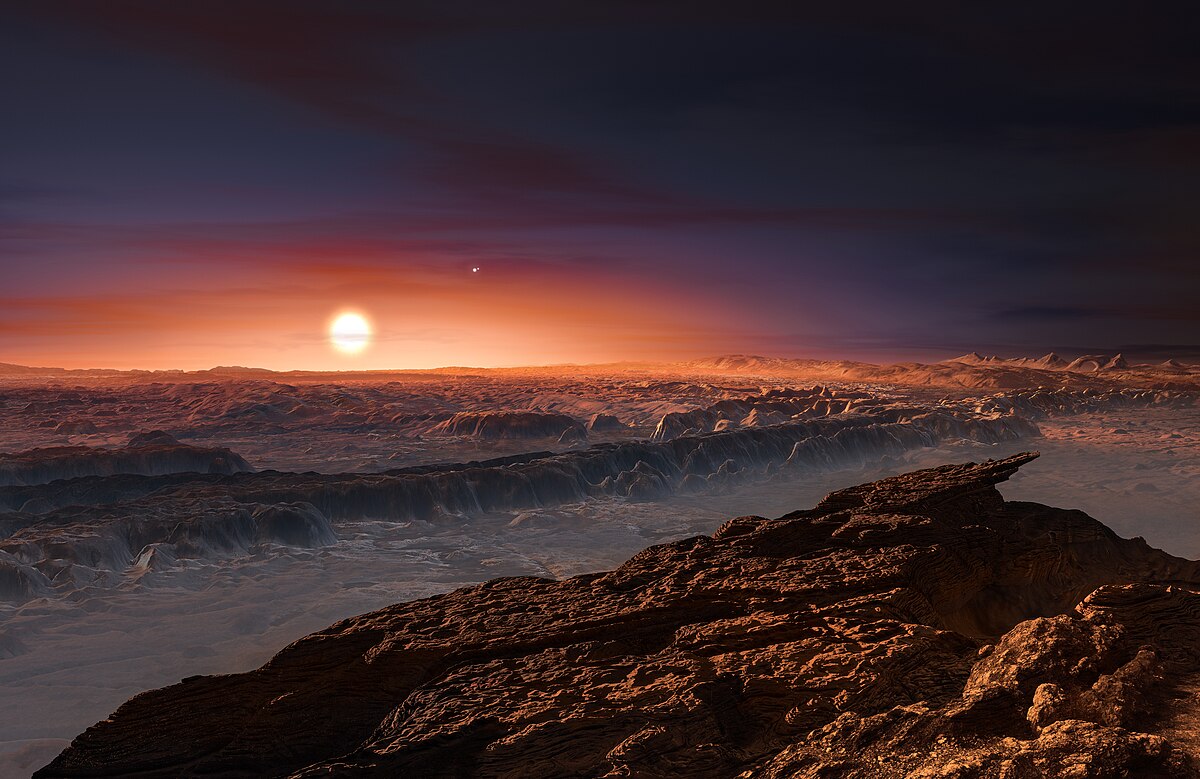
This artist’s impression shows a view of the surface of the planet Proxima b orbiting the red dwarf star Proxima Centauri, the closest star to the Solar System. The double star Alpha Centauri AB also appears in the image to the upper-right of Proxima itself. Proxima b is a little more massive than the Earth and orbits in the habitable zone around Proxima Centauri, where the temperature is suitable for liquid water to exist on its surface.
Astronomers have identified Earth-like exoplanets orbiting distant stars, sparking excitement about the possibility of finding habitable worlds beyond our solar system. Notable examples include Proxima Centauri b, located in the habitable zone of our nearest stellar neighbor, and Kepler-452b, often referred to as “Earth’s cousin” due to its similar size and orbit around a sun-like star. These discoveries, made using advanced telescopes such as the Kepler Space Telescope and the Transiting Exoplanet Survey Satellite (TESS), reveal planets with conditions that could support life, such as appropriate temperatures and the potential presence of water.
This ongoing exploration fuels our curiosity about extraterrestrial life and significantly expands our understanding of planetary systems. The discovery of exoplanets like Proxima Centauri b and Kepler-452b brings us closer to answering the age-old question: Are we alone in the universe?
